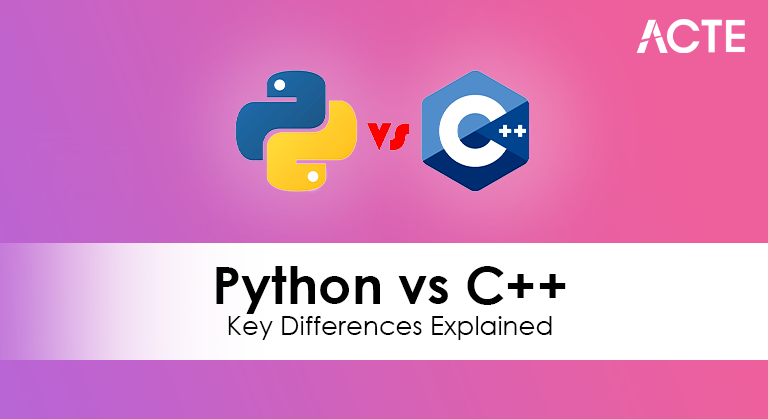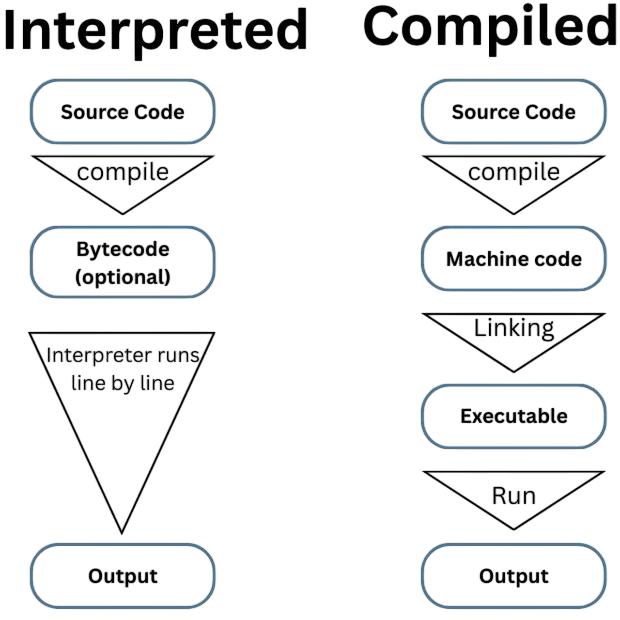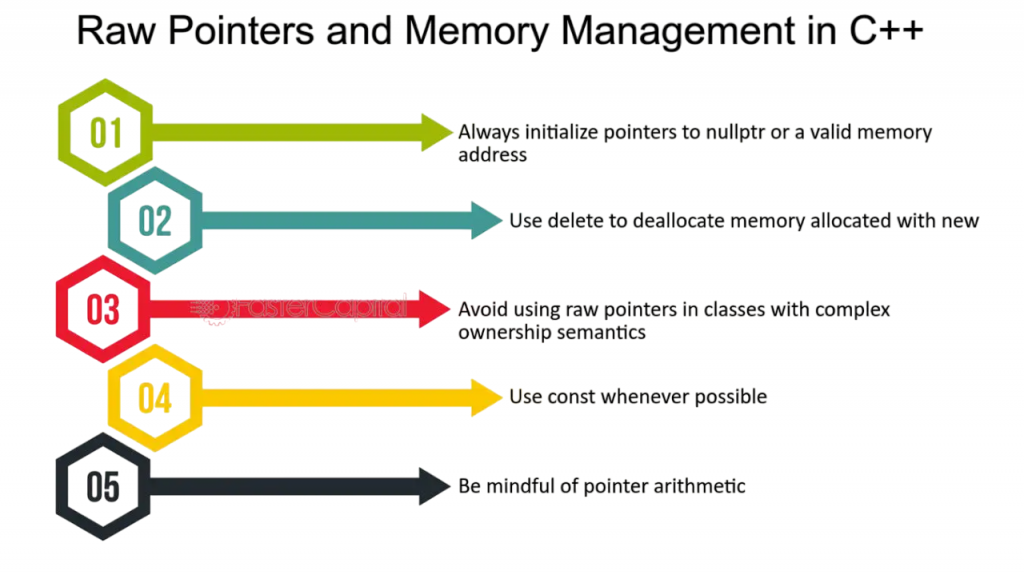
- Introduction to Python and C++
- Syntax Simplicity and Readability
- Language Type: Interpreted vs Compiled
- Speed and Performance Benchmarks
- Object-Oriented Programming Capabilities
- Standard Libraries and Ecosystem
- Memory Management and Pointers
- Platform Independence and Portability
- Use Case Scenarios in Industry
- Developer Productivity and Debugging
- Learning Curve and Community Support
- Conclusion – Which Language to Choose and When
Introduction to Python and C++
Python and C++ are two of the most influential programming languages in the modern software ecosystem. Each serves distinct purposes and caters to different programming paradigms and project needs. Python, an interpreted high-level language, is known for its simplicity, versatility, and readability. Created by Guido van Rossum and released in 1991, Python emphasizes rapid development and code clarity, making it an ideal choice for Python Training where learners can quickly grasp programming concepts and focus on building efficient, readable code. C++, on the other hand, is a statically typed, compiled language developed by Bjarne Stroustrup as an extension of C. It combines low-level memory manipulation with high-level object-oriented features, making it ideal for performance-critical applications. Understanding the contrast between Python and C++ is essential for choosing the right tool for specific software projects. This comprehensive comparison covers their technical differences, usability, industry applications, and community support.
Interested in Obtaining Your Python Certificate? View The Python Training Course Offered By ACTE Right Now!
Syntax Simplicity and Readability
Syntax Simplicity and Readability are two of Python’s key advantages over C++, making it simpler for novices to pick up the language and generate clear code more rapidly. C++, on the other hand, provides greater control but has a more intricate syntax that can be more challenging to understand. Overall, Syntax Simplicity and Readability are important considerations when selecting Python for quick development and prototyping, but C++ is better suited for applications requiring high performance. For those looking to gain proficiency in Python or C++, enrolling in a Top Online Course in India can provide structured learning and hands-on experience to excel in these programming languages. Python is synonymous with readable, beginner-friendly syntax. Its minimalist design encourages clean, concise code. Python avoids unnecessary punctuation and requires indentation to define code blocks. Example Comparison:
Python:
- for i in range(5):
- print(“Hello”, i)
C++:
- for (int i = 0; i < 5; ++i) {
- std::cout << "Hello " << i << std::endl;
- }
Python’s readability makes it ideal for educational purposes and rapid application development. C++’s syntax, while more robust, demands a steeper learning curve.
Language Type: Interpreted vs Compiled
Python is an interpreted language, meaning code is run line-by-line by an interpreter, typically CPython. This approach enhances development flexibility and ease of testing but introduces a performance overhead. Because Python interprets at runtime, developers can iterate quickly and debug with greater interactivity.
- The fundamental difference between Python and C++ is highlighted by the interpreted vs compiled nature of the languages. C++ is a compiled language. Before execution, C++ code is translated into machine code using a compiler like GCC or Clang.
- This compilation results in significantly faster runtime performance compared to interpreted code. However, compilation can add complexity to the build and debugging process, which can be mitigated through techniques like Grey Box Testing where testers combine both internal knowledge of the system and external behavior to effectively identify issues during the development process.

The distinction influences development speed, deployment efficiency, and system compatibility. Python’s interpretation makes it great for scripting and automation, while C++’s compiled nature suits high-performance system software.Understanding the interpreted vs compiled distinction helps developers choose the right language based on their needs for speed, flexibility, and ease of development.
Speed and Performance Benchmarks
C++ consistently outperforms Python in terms of execution speed. Since C++ compiles directly to machine code, it can optimize memory and CPU usage effectively. Applications like game engines, operating systems, and financial systems rely on C++ for its performance.When comparing Python and C++, speed and performance are often the deciding factors.
- C++ is known for its exceptional speed and performance due to its compiled nature and low-level memory control, making it ideal for resource-intensive applications. Additionally, features like Inheritance in CPP allow for code reuse and the creation of hierarchical class structures, enhancing the maintainability and scalability of complex applications.
- Python, while slower, compensates with development agility. It suits applications where development speed is more crucial than execution speed, such as data analysis, automation scripts, or web services. Python’s performance can be augmented with native extensions written in C/C++, and tools like Numba or Cython.
- Both Python and C++ support object-oriented programming (OOP), including encapsulation, inheritance, and polymorphism. C++ supports multiple inheritance, function overloading, and operator overloading. It also offers strict access control using private, public, and protected specifiers.
- Virtual functions and pure virtual functions (interfaces) provide runtime polymorphism, allowing for flexible and dynamic behavior in object-oriented programming. For students considering a career in software development, enrolling in After 12th Software Engineering Courses can provide a solid foundation in concepts like polymorphism, along with practical skills in languages such as C++ and Python.
- Web development (Django, Flask)
- Data science (Pandas, NumPy, Matplotlib)
- Machine learning (scikit-learn, TensorFlow)
- Automation (Selenium, PyAutoGUI)
- Data science and analytics
- Artificial intelligence and machine learning
- Automation and scripting
- Web applications
- Educational tools and prototyping
- Game development (Unreal Engine, custom engines) often involves complex data structures for efficient performance. One such structure is the Sparse Matrix in Data Structure which is especially useful in scenarios where large matrices have a majority of zero elements, such as in game physics simulations, AI pathfinding, or handling large game worlds with sparse data.
- System and embedded programming
- High-performance applications (trading, simulations)
- Operating systems and drivers
- Real-time applications (robots, IoT)
- You are a beginner or transitioning into programming.
- Your project emphasizes quick development and maintainability.
- You are working in data analysis, AI, or web applications.
- You need high performance and low-level system access.
- You are developing games, embedded systems, or operating systems.
- You want to build performance-intensive applications with tight resource constraints.
In performance-critical benchmarks, C++ dominates. However, for everyday application logic, Python often suffices and accelerates time-to-market.
Object-Oriented Programming Capabilities
Everything in Python is an object, including functions and classes. This dynamic nature allows elegant and compact code but can complicate large-scale architecture without strict design discipline.
Gain Your Master’s Certification in Python Developer by Enrolling in Our Python Master Program Training Course Now!
Standard Libraries and Ecosystem
Python boasts a massive standard library and a vast ecosystem of third-party packages. Through tools like pip and repositories like PyPI, developers can access libraries for:
C++ includes the Standard Template Library (STL), which provides powerful data structures (vectors, maps, queues), algorithms, and iterators. STL allows for efficient generic programming, much like how Python Training equips developers with the skills to use Python’s dynamic typing and built-in data structures for flexible, high-performance programming. Beyond the standard library, C++ also has mature third-party libraries like Boost, Qt, and OpenCV. While both languages offer rich ecosystems, Python’s ease of integration and package management make it more beginner- and productivity-friendly.
Memory Management and Pointers
C++ grants developers complete control over memory allocation and deallocation using new and delete.A major difference between Python and C++ lies in memory management and pointers. C++ requires programmers to manually handle memory management and pointers, giving more control but increasing complexity and risk of errors. In contrast, Python abstracts these details, automatically managing memory, which simplifies development but may reduce fine-tuned control. For those looking to dive deeper into computer science concepts and gain advanced knowledge in programming, MTech Courses in CSE offer an in-depth study of system-level programming, memory management, and optimization techniques, which are essential for mastering languages like C++ and understanding low-level system behavior. This control is advantageous for resource-constrained environments but introduces risks like memory leaks and segmentation faults.

Pointers, unique to C and C++, enable direct memory addressing. This low-level feature allows system-level programming but requires a solid understanding of computer architecture. Python abstracts memory management through automatic garbage collection. Developers work with objects and data structures without worrying about memory allocation. While this abstraction reduces control, it simplifies coding and eliminates common memory errors.
Platform Independence and Portability
Python is highly portable. As long as Python is installed, scripts can run on any operating system without modification. Popular on Windows, Linux, and macOS, Python is often used in cross-platform application development. For those looking to deepen their expertise in programming and software development, a Masters Degree in CS can provide comprehensive knowledge of cross-platform development, advanced Python techniques, and other crucial skills to build scalable and efficient applications across multiple operating systems.
Use Case Scenarios in Industry
Python is ideal for:-
C++ is best suited for:
Many companies use Python for high-level development and C++ for performance-critical components. For example, YouTube’s backend uses C++ modules for video processing and Python for orchestration.
Are You Preparing for Python Jobs? Check Out ACTE’s Python Interview Questions and Answers to Boost Your Preparation!
Developer Productivity and Debugging
Python’s simplicity leads to higher productivity, especially in small teams and startups. Its dynamic typing, interactive shell, and integrated tools like Jupyter Notebook facilitate rapid development. C++ offers granular debugging capabilities through tools like GDB and Valgrind, making it easier to track down memory leaks and performance issues. For those looking to stay ahead in the field, learning about the Latest Technology in CS can help you leverage these debugging tools effectively while also exploring cutting-edge advancements like AI, machine learning, and cloud computing in software development.
Learning Curve and Community Support
Python has a smooth learning curve, making it a favorite for beginners. It’s widely taught in universities and coding bootcamps. The community is supportive, with abundant resources, tutorials, forums, and documentation, making it easier for learners to grow. For those looking to enhance their skills, enrolling in Best Online Computer Courses can provide structured learning, expert guidance, and hands-on experience to master various programming languages, frameworks, and technologies. C++ has a steeper learning curve due to its syntactic complexity and memory management requirements.That said, it provides deeper insights into how computers work, making it a great language for understanding core programming concepts. Its community, though smaller than Python’s, is highly experienced and active in open-source development.
Conclusion – Which Language to Choose and When
Choose Python if :Ultimately, both Python and C++ are indispensable in the tech world. Python promotes speed and ease of development, making it a popular choice for Python Training where developers can quickly learn to build applications. In contrast, C++ ensures high performance and system-level control, often covered in advanced programming courses for those seeking deeper control over hardware and memory management. Learning both languages enhances a developer’s versatility and opens doors to a broad range of projects, from scripting automation to building complex software architectures.





